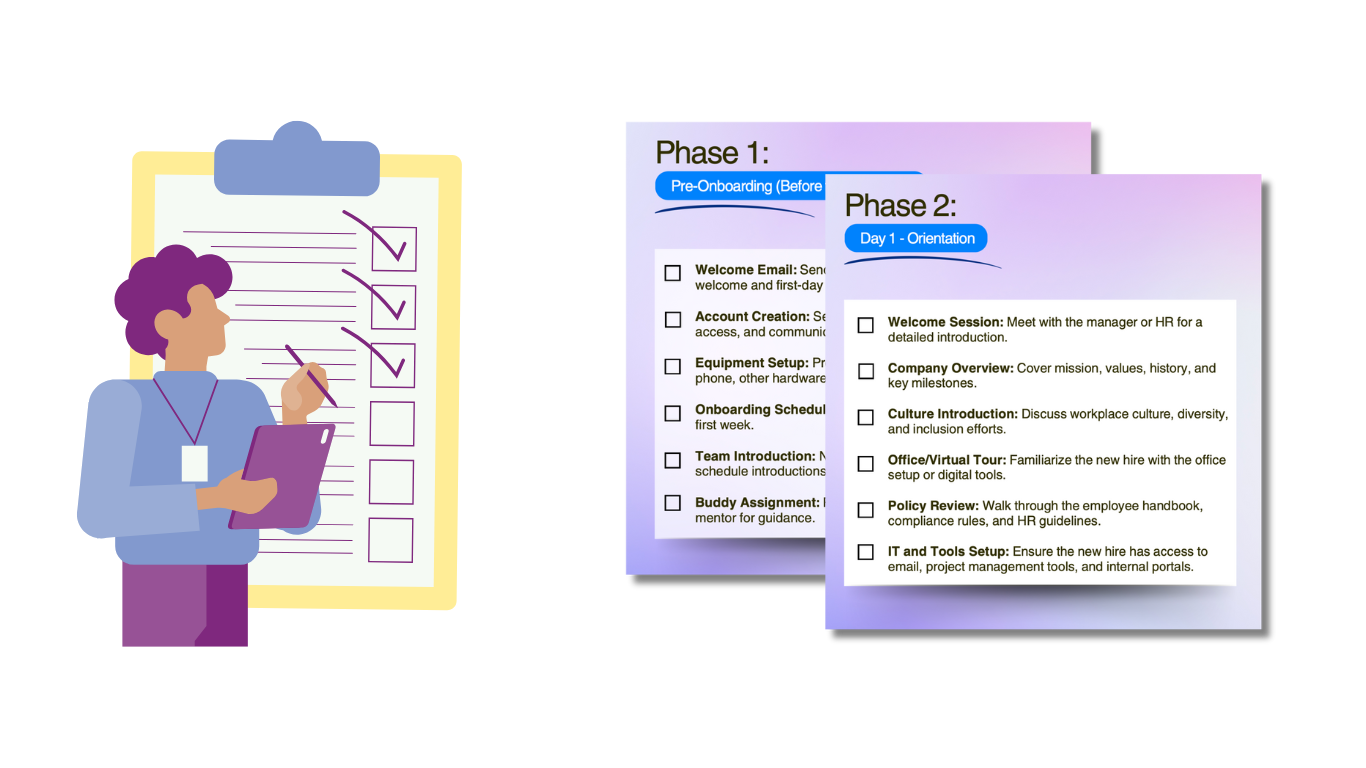Mastering New Hire Training: Best Practices for Effective Onboarding Success
Starting a new job is an exciting yet challenging experience. A well-structured new-hire training plan ensures that employees transition smoothly into their roles, equipping them with the essential skills, knowledge, and resources necessary for success. The employee training process not only familiarizes new hires with company policies, corporate culture, and expectations but also enhances team cohesion and employee engagement from day one.
An effective new-hire training program aligns employees with organizational goals, fostering a sense of belonging and career growth. Structured onboarding programs improve employee retention rates, reduce hire turnover, and contribute to long-term productivity. Whether through classroom-based instruction, interactive sessions, or corporate training, companies must adopt best practices for employee onboarding to create a collaborative learning environment that ensures success.
Hiring new team members is an exciting step for any organization, but ensuring their onboarding experience is smooth and thorough is crucial. Our New Hire Training Checklist helps you:

Get the checklist!
Overview of New Hire Training
A well-planned hire training program is a crucial aspect of any company’s hiring process. It ensures that hires into company culture are seamless while minimizing skill gaps and enhancing employee performance.
Importance of Effective Training
An effective employee training initiative provides clear expectations and structured learning to avoid a poor onboarding experience. It helps new employees quickly adapt to their job roles, enhances job satisfaction, and encourages continuous learning. Additionally, organizations benefit from improved team dynamics, stronger business activities, and better alignment with common goals.
Objectives of New Hire Training
The key objectives of an employee training program include:
- Familiarizing employees with company structure, company values, and organizational culture.
- Defining job descriptions and responsibilities to set clear key performance indicators.
- Developing skills through hands-on training, experiential learning, and elective learning.
- Introducing company policies, including the code of conduct, dress code, and office culture.
- Establishing connections with key stakeholders, business units, and team members.
By achieving these objectives, companies enhance employee morale, boost retention rates, and ensure a more comprehensive onboarding process.
Types of New Hire Training
Different training methods cater to various learning styles and employee training plans. The best approach combines multiple methods for an engaged employee experience.
Onboarding Processes
A successful onboarding process introduces employees to company policies, organizational structure, and business goals. It includes:
- Hire orientation, where employees receive a detailed job description and an employee handbook.
- Onboarding checklists, which outline essential tasks, expectations, and milestones.
- Mentorship programs, connecting new hires with experienced employees for guidance.
A structured onboarding experience improves employee satisfaction, increases engagement, and fosters internal knowledge sharing.
Job-Specific Training
Role-specific training focuses on job-specific skills and daily tasks that employees need to succeed. This training may involve:
- Hands-on training for technical roles.
- Job shadowing with senior team members.
- Soft skills development to improve communication and leadership abilities.
Employers should provide training sessions tailored to each department’s needs, ensuring that employees perform effectively in their current roles.
Compliance Training
Ensuring compliance with legal and industry regulations is vital. Compliance training covers:
- Code of conduct and workplace ethics.
- Health and safety regulations.
- Data protection policies.
A comprehensive compliance training program minimizes risks and reinforces a company’s commitment to employee growth.
Best Practices for New Hire Training
To optimize employee onboarding programs, businesses should follow these best practices:
Creating a Structured Training Program
A well-defined training plan should:
- Outline key milestones and critical skills needed for the role.
- Provide customized training materials based on the training process.
- Include continuous feedback loops to assess employee understanding.
Employers can use employee onboarding software to track progress and streamline the onboarding checklist.
Utilizing Mentorship and Buddy Systems
Assigning mentors helps new hires navigate the workplace while promoting team cohesion. Mentorship fosters career development and creates an interactive learning environment that accelerates skill development.
Incorporating Feedback Mechanisms
Regular feedback through structured feedback sessions is key to identifying knowledge gaps. Businesses should implement:
- Employee training checklists to monitor progress.
- Surveys and performance evaluations to track employee satisfaction.
- Continuous feedback loops that encourage open discussions.
Adapting Training for Hybrid and Remote Employees
With the rise of hybrid workers and remote employees, training methods must evolve. Virtual training sessions, employee onboarding systems, and digital learning management platforms ensure seamless knowledge transfer across locations.
Challenges in New Hire Training and Solutions
Even the most well-planned employee training solution can encounter challenges. Recognizing and addressing these issues early ensures a chance of success.
Common Obstacles
- Hire turnover due to unclear expectations and lack of engagement.
- Skill gaps caused by inadequate training or lack of access to resources.
- Information overload, making it difficult for new hires to absorb crucial details.
Solutions and Strategies
- Break down training into digestible modules, ensuring time for questions.
- Use a range of activities, including interactive sessions and role-specific training.
- Implement a comprehensive process for employee orientation ideas and employee onboarding checklist templates.
Conclusion
A well-executed employee onboarding process is essential for long-term success. Companies that invest in effective training programs benefit from higher employee retention, better employee performance, and a strong commitment to employee growth.
By leveraging effective new-hire training, businesses can build an engaged workforce, enhance business activities, and ensure that employees are set up for career progression from day one.